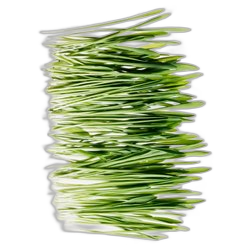green
Herbs
Herbs are aromatic plants used for cooking, medicinal purposes, and fragrances. Each herb possesses a unique scent profile that enhances both culinary dishes and sensory experiences.
1. **Basil**: Sweet and spicy with hints of anise, commonly found in Italian and Asian cuisines. It adds a fresh, slightly sweet aroma.
2. **Mint**: Known for its cool, refreshing scent, mint varieties like peppermint and spearmint offer distinctively crisp aromas often used in beverages, desserts, and savory dishes.
3. **Rosemary**: Characterized by a woody, evergreen scent, it is potent with pine-like and slightly lemony notes, ideal for flavoring meats and soups.
4. **Thyme**: This herb emits a subtle, earthy aroma with minty and lemon undertones, often utilized in Mediterranean cooking.
5. **Oregano**: Pungent and earthy with a slight bitterness, it's a staple in Greek and Italian dishes, providing a warm, aromatic twist.
6. **Sage**: With a robust, slightly peppery fragrance, sage has hints of eucalyptus and citrus. It is popular in European cuisines, especially in stuffings and with roasted meats.
7. **Parsley**: Fresh and clean with a light, peppery note, parsley is versatile, used for its mild, yet slightly tangy flavor that complements a wide variety of dishes.
8. **Cilantro**: Often described as fresh and citrusy with a controversial soapy undertone for some, cilantro is essential in Mexican, South Asian, and Middle Eastern cooking.
9. **Chives**: Delicate onion-flavored, with a mild, grassy fragrance, chives are excellent for garnishing and adding a light oniony touch without overpowering dishes.
Each herb's aroma contributes uniquely to culinary creations and herbal infusions, providing not just flavor but a sensory portal to different cultural landscapes.
Like this smell?
Discover your fragrance match by taking our quiz and exploring scents tailored to your taste.



